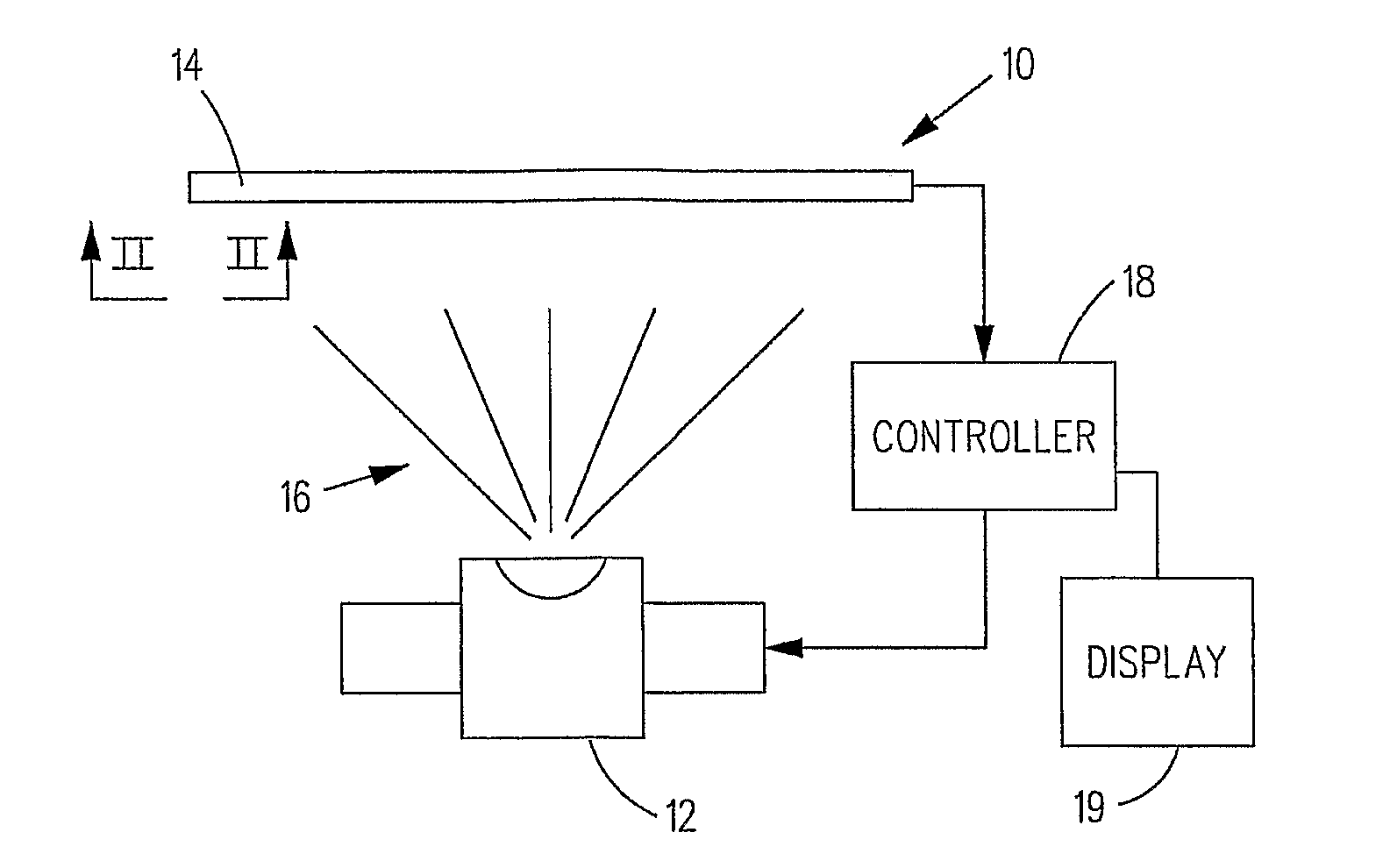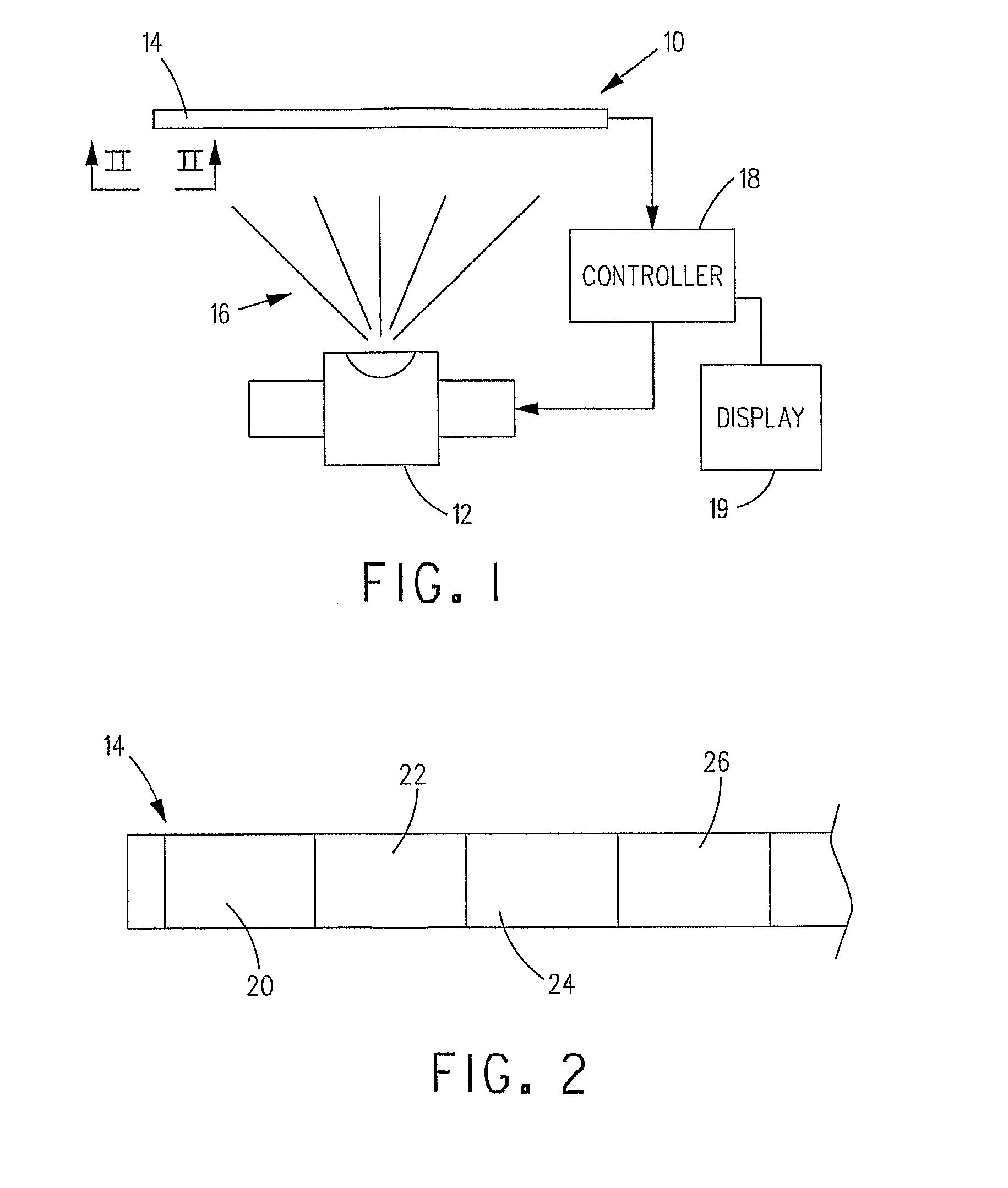Count uniformity correction in flux space for pixilated semiconducting radiation detectors
a detector and flux space technology, applied in the field of photon detection systems, can solve problems such as non-uniform pixel response, non-uniform pixel response due to material sensitivity, and non-linear loss in measured counts
- Summary
- Abstract
- Description
- Claims
- Application Information
AI Technical Summary
Problems solved by technology
Method used
Image
Examples
Embodiment Construction
[0032]The present invention will be described with reference to the accompanying figures where like reference numbers correspond to like elements.
[0033]With reference to FIG. 1, a radiographic imaging system 10 includes a high energy photon source 12, such as, without limitation, an x-ray source or a gamma ray source, and at least one detector array 14 positioned in a transmission path 16 of photons output by photon source 12. If desired, a collimator (not shown) may be positioned between photon source 12 and detector array 14 for shaping, focusing and restricting the photons that impinge on detector array 14.
[0034]One or more controllers 18 can be provided and operative for controlling the operation of photon source 12 and for detecting and processing photon events detected by the radiation detection elements or pixels (described hereinafter) of detector array 14. The depiction in FIG. 1 of a single controller 18 coupled to photon source 12 and detector array 14 is not to be constr...
PUM
 Login to View More
Login to View More Abstract
Description
Claims
Application Information
 Login to View More
Login to View More - R&D
- Intellectual Property
- Life Sciences
- Materials
- Tech Scout
- Unparalleled Data Quality
- Higher Quality Content
- 60% Fewer Hallucinations
Browse by: Latest US Patents, China's latest patents, Technical Efficacy Thesaurus, Application Domain, Technology Topic, Popular Technical Reports.
© 2025 PatSnap. All rights reserved.Legal|Privacy policy|Modern Slavery Act Transparency Statement|Sitemap|About US| Contact US: help@patsnap.com



